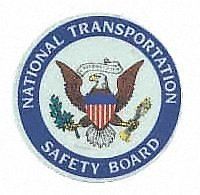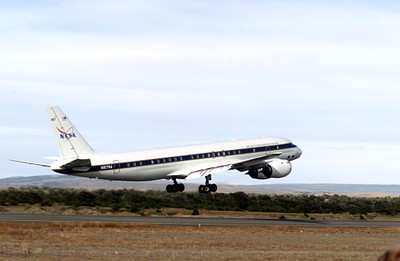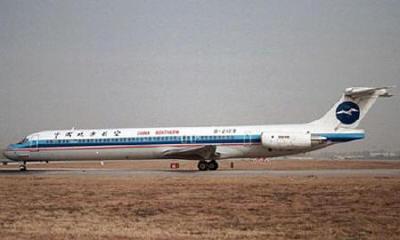What's Classified As Error Could Be Avoidable Fatigue
By ANN Contributor Steven R. Lund
 Assigning "Pilot Error" as the sole
cause or even a contributing factor to the cause of an airliner
accident is, to say the least, counterproductive. This is
tantamount to declaring that Sir Isaac Newton and Albert Einstein
contributed to the cause because they formulated classic laws of
gravity! Obviously such a "relatively general" reason for an
accident has little meaning to facilitate any remedial action to
prevent future accidents. So, if any human error was suspected in
the chain of events leading to an accident, the most important
aspects of this fact is who committed the error, and, most
importantly, why was the error committed? Only after these
determinations, can investigators formulate effective corrective
action. For instance, was the human properly trained to perform the
task required? Or, were the proper tools provided, was the human
physically capable, or medically fit?
Assigning "Pilot Error" as the sole
cause or even a contributing factor to the cause of an airliner
accident is, to say the least, counterproductive. This is
tantamount to declaring that Sir Isaac Newton and Albert Einstein
contributed to the cause because they formulated classic laws of
gravity! Obviously such a "relatively general" reason for an
accident has little meaning to facilitate any remedial action to
prevent future accidents. So, if any human error was suspected in
the chain of events leading to an accident, the most important
aspects of this fact is who committed the error, and, most
importantly, why was the error committed? Only after these
determinations, can investigators formulate effective corrective
action. For instance, was the human properly trained to perform the
task required? Or, were the proper tools provided, was the human
physically capable, or medically fit?
I suspect that some accidents attributed to pilot error were
actually simply the result of the pilot being too fatigued to
properly perform the tasks required to prevent the accident! I know
of one DC-8 freighter accident where "pilot fatigue" was implicated
as the cause of the airplane wing stalling and crashing a
quarter-mile short of the runway. The wording of the official
probable cause was summarized in some news accounts as "pilot
error!"

Experts from NASA collaborated with NTSB investigators in
assessing whether fatigue was present in the 1993 crash of a US
DC-8 (file photo of type, above) freighter in Guantanamo Bay, Cuba.
The DC-8 crashed into level terrain during a circling approach to
the landing runway in clear weather, resulting in the aircraft
being damaged beyond repair, but, no fatalities to the three crew
members -- the only persons aboard. The NTSB implicated fatigue as
a probable cause-the first time fatigue had been so identified in
an aviation accident. Three core physiological factors related to
fatigue were identified (cumulative sleep loss, continuous hours of
wakefulness, and circadian time of day). All three crewmembers were
found to be heavily influenced by these fatigue factors.
There have been other accidents with causes I suspect could have
been similarly associated with pilot fatigue, namely:

The June 1999 fatal runway accident of American Airlines Flight
1420 in which a McDonnell Douglas MD-82 (file photo of type, above)
overran the end of the runway, went down an embankment, and
impacted approach light structures after landing at the Adams Field
Airport in Little Rock, AR. Thunderstorms and heavy rain were
reported in the area at the time of the accident. There were 11
fatalities, including the aircraft captain, and numerous injuries
among the 145 passengers and crew aboard the flight. The
official cause of this accident was "the flight crew's failure to
discontinue the approach when severe thunderstorms and their
associated hazards to flight operations had moved into the airport
area and the flight crew's failure to ensure that the spoilers had
extended after touchdown. Contributing to the accident were the
flight crew's (1) impaired performance resulting from fatigue and
the situational stress associated with the intent to land under the
circumstances, (2) continuation of the approach to a landing when
the company's maximum crosswind component was exceeded, and (3) use
of reverse thrust greater than 1.3 engine pressure ratio after
landing."
Even though the weather was a factor in this accident, there was
no wind shear present. But there were crosswinds compounding the
difficulties faced by the pilot in performing the approach and
landing and the fact that pilot fatigue was deemed a "contributing
factor to the accident tends to amplify the Pilot Error cause due
to the official report listing a number of failures both before and
after the plane's touchdown on the runway.

The crash of KAL Flight 801 in Guam on August 6, 1997 (above),
was the result of several errors by the crew, most notably a lack
of situational awareness resulting in "controlled flight into
terrain (CFIT)." However, the pilot in command of the flight was a
senior and experienced pilot in the company. While the captain was
not familiar with the terrain, and visibility at the time was
reduced due to rain, the approach into Guam should not have been
difficult. So what caused the Captain to lose concentration and
situational awareness, and thereby fly a perfectly good 747 into a
hilltop, killing 228 people? Could it be that prior to flying to
Guam he had flown from Seoul to Australia, back to Seoul, to Hong
Kong, and then back to Seoul again before his fateful trip to Guam,
all with only a few hours of rest?
The official probable cause of this accident was "The captain's
failure to adequately brief and execute the nonprecision approach
and the first officer's and flight engineer's failure to
effectively monitor and cross-check the captain's execution of the
approach. Contributing to these failures were the captain's fatigue
and Korean Air's inadequate flight crew training. Contributing to
the accident was the Federal Aviation Administration's intentional
inhibition of the minimum safe altitude warning system and the
agency's failure to adequately to manage the system." Again, a list
of human failures without specific mention of why! It's no wonder
that this accident could be relegated to the "Pilot Error File"
without meaningful remedial action and the very predictable
non-zero probability of repeat accidents.
Going back a bit to March 1969 when a United Arab Airlines, Russian
built Ilyushin 18 tried to land at Aswan, Egypt after 2 previous
attempts in a sandstorm. Rising sand in the Aswan area caused the
visibility to drop from 10km to 2-3km. The right wing contacted the
left side of the runway 1120m from the threshold. The wing broke
off and the aircraft crashed in flames killing 100 passengers and
crew of the 105 total persons aboard.
The official cause of this accident was: "Pilot descended below
the minimum safe altitude without having the runway lights clearly
in sight. A contributory factor was fatigue arising from continuous
working hours without suitable rest periods."
By now it should be obvious that the root cause of these
accidents where the human pilot made errors was fatigue, not pilot
error! So, what can be done about fatigue?
(Steven R. Lund is the retired director of flight safety
investigations in flight operations for the Douglas Products
Division of the Boeing Commercial Airplane Group in Long Beach,
California. He has spent over 36 years in the US aerospace
industry, the last 32 of which have been at the Douglas Aircraft
Company (now Boeing). His entire career at Douglas/Boeing has been
devoted to flight test, flight safety, and commercial jet transport
incident and accident investigation. Steve has some very definite
thoughts on that question -- and we'll share them in tomorrow's
edition of Aero-News. -- ed.)
 ANN's Daily Aero-Linx (05.06.25)
ANN's Daily Aero-Linx (05.06.25) ANN's Daily Aero-Term (05.06.25): Ultrahigh Frequency (UHF)
ANN's Daily Aero-Term (05.06.25): Ultrahigh Frequency (UHF) ANN FAQ: Q&A 101
ANN FAQ: Q&A 101 Classic Aero-TV: Virtual Reality Painting--PPG Leverages Technology for Training
Classic Aero-TV: Virtual Reality Painting--PPG Leverages Technology for Training Airborne 05.02.25: Joby Crewed Milestone, Diamond Club, Canadian Pilot Insurance
Airborne 05.02.25: Joby Crewed Milestone, Diamond Club, Canadian Pilot Insurance






